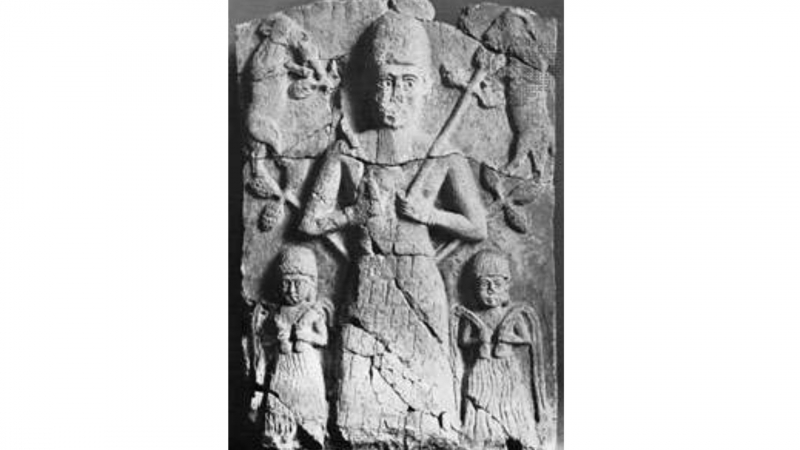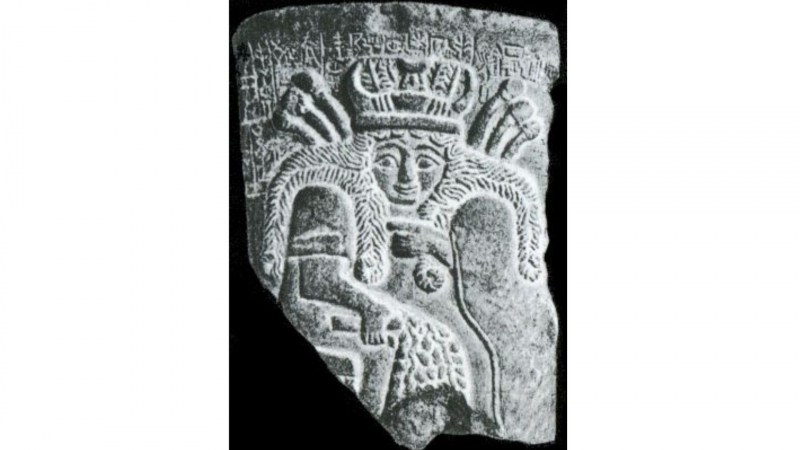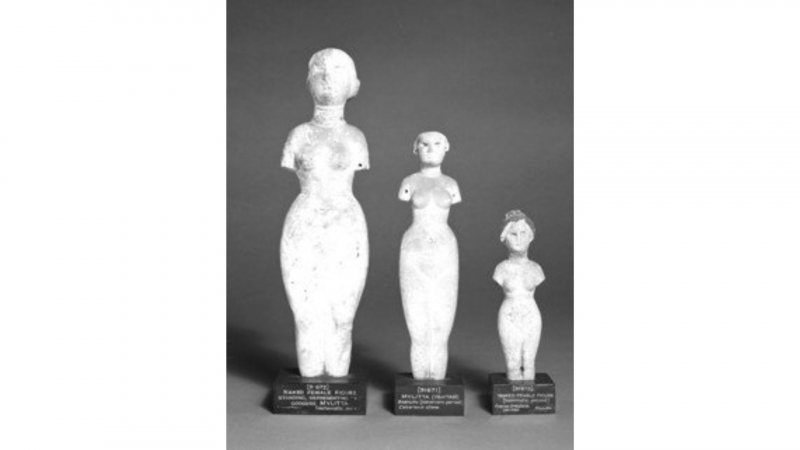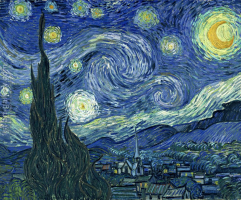Top 9 Most Influential Goddesses Of Mesopotamia
The many Mesopotamian civilizations shared the same gods with different names and identities because they were deeply religious people. To help shed some ... read more...insight on Mesopotamian mythology, let's have a look at the most influential goddesses of Mesototamia through this list!
-
Ereshkigal, also known as Irkalla, was revered as the ruler of the underworld in Sumerian mythology. Her name, Irkalla, is the Greek mythology equivalent of Hades. The names for the realm of the underworld and its gods are Irkalla and Hades, respectively. She is referred to in literature as Ninkigal, which is Sami for "Lady of the Great Earth." In the realm of the dead, she was the only female legislator and judge. She shared control of Irkalla with Nergal, who was her consort. The primary temple of Ereshkigal was located in Kutha. She is referred to as Inanna's elder sister in the historic poem Inanna's Descent to the Underworld.
One of the two myths centered on Irkalla is the goddess Inanna's fall into the underworld. Inanna visits the underworld in an effort to strengthen her abilities. Neti, the gatekeeper, is instructed to seal all the gates and open them one at a time as Inanna takes off bits of her clothing when Enki, the god of water, is notified about it. When Neti complies with these directives, Inanna is rendered helpless and nude when she approaches the throne. The seven judges find Inanna guilty and sentence her to death, with her body being hung from a hook so that everyone may view it. Ereshkigal agrees to aid Inanna after Ninshubur, Inanna's second in command, appeals to her. With food and water, she sends two sexless animals to resuscitate her smaller sister. Two demons arrive and request someone else to take her place as they attempt to remove her from the underworld. Inanna orders the devils to take her husband in her place after learning that he did not grieve for her death. It is Ereshkigal who revives Inanna.

Photo: Wikipedia 
Photo: Ancient History Lists -
The following most influential Goddess of Mesopotamia is Nanshe: The Goddess of Social Justice of Prophecy. The mother goddess Ninhursag and the god of water, knowledge, mischief, crafts, and creation, Enki, were the parents of Nanshe. Like her father, she had several abilities with him, including prophecy, social justice, fishing, and fertility, and she also had a strong connection to water. Enki was tasked with assigning duties to each god, and Nanshe was given control of the Persian Gulf. Near Nina in Sirara was where her temple was located. As the goddess of social justice and balance, Nanshe helped widows, took care of orphans, rescued individuals from dangerous areas, and gave debtors guidance. She predicted the future via oneiromancy, the practice of reading dreams, in her role as goddess of prophecy. Even her priests had the gift of prophecy following the completion of specific ceremonies involving death and resurrection.
Many songs to Nanshe appeared between 2144 and 2124 BCE, depicting her in a high place in the pantheon. She was a goddess of justice who was highly revered. She fostered orphans, supported widows, offered debt counseling to those who needed it, and welcomed refugees from places ripped apart by conflict. Several additional gods seemed to be under Nanshe's control. Her assistants were Haia and Hendursag. She had Nisaba as her principal scribe, who was occasionally portrayed as Nanshe's sister. A festival was conducted in her temple on the first day of the new year. People flocked to her for advice and assistance from all over the country. If worthy, visitors were granted an audience with the goddess after being purified in the river of trials. Among mortals, Nanshe arbitrated disputes and presided over trials. Nanshe, who had a larger position in the pantheon during this time, occasionally collaborated on projects with Utu, the traditional deity of justice. She was revered as a goddess of protection and sat on the holy thrones among other powerful deities. Ninurta, the powerful god of war, looks to her for direction at one point.

Photo: Ancient History Lists 
Photo: Wikipedia -
Ishtar, the goddess of love, sex, and fertility, was the East Semitic equivalent of Inanna, the Sumerian goddess; Astarte, the goddess of the Northwest Semitic region; and Astghik, the goddess of Armenian culture. She was a well-known deity from 3500 BC to the first to fifth century, when Christianity began to gain ground. The eight-pointed star and a lion were her emblems. In the Babylonian pantheon, she shared a close relationship with Venus. Her myth largely has similarities with the Sumerian tale of Inanna's descent into the underworld. She is depicted as a spoilt, irritable femme fatale in the Epic of Gilgamesh. Enkidu the wild man is killed as a result of Ishtar unleashing the Bull of Heaven after she demands to be Gilgamesh's consort and he refuses.
She is supposedly the daughter of Anu, the sky god. The inhabitants of Upper Mesopotamia worshiped her in the Assyrian cities of Ashur, Arbela, and Nineveh. The inhabitants of Uruk were fervent worshippers of Ishtar. It has been contested for decades that her religion engaged in some form of religious prostitution. Whether the priestess engaged in sexual activity is still up for debate, despite the fact that many people claim it never did. Although she was revered as the goddess of love and sexuality, she was not regarded as the matriarchal or matrimonial goddess.

Photo: Wikipedia 
Photo: Wikipedia -
Tiamat is the next one of the most influential Goddesses of Mesopotamia Toplist want to mention. The first-generation Babylonian gods were produced by the union of Tiamat, the goddess of the salt sea, and Abzu, the god of freshwater. The Tiamat mythology and Chaoskampf Tiamat are two components of the deity, according to the texts. She has horrific implications in the second form because she is a symbol of primordial chaos, whereas the first half represents the image of a sacred goddess and the marriage of fresh and saltwater. Dragons and sea serpents are frequently used to symbolize her.
She has a tail, a thigh, "lower parts" (which shake together), a belly, an udder, ribs, a neck, a head, a skull, eyes, nostrils, a mouth, and lips, according to the Enûma Elish. She possesses internal organs, including perhaps "entrails," a heart, arteries, and blood. Although Assyriologist Alexander Heidel disagreed with this description and claimed that "dragon form may not be assigned to Tiamat with certainty," Tiamat is frequently represented as a sea serpent or dragon. Joseph Fontenrose, in particular, deemed Heidel's reasoning "not persuasive" and came to the conclusion that "there is grounds to suppose that Tiamat was sometimes, not necessarily always, envisioned as a dragoness." Tiamat gave birth to dragons, serpents, scorpion men, merpeople, and other monsters, according to the Enûma Elish, although it doesn't specify what form she took.
She gives birth to the first generation of gods in a Babylonian creation story. They assassinate her husband Absu in order to usurp the throne. She transforms into a sea dragon and waging battle against the killers after becoming utterly outraged. Marduk, the storm deity and the son of Enki, ends her life. She introduces the first dragons with venomous bodies into the Mesopotamian pantheon before she perishes.

Photo: Scientific Mystery 
Photo: Pinterest -
Ninkasi, the child of Uruk and Inanna, was created to be one of the people who would treat Enki's eight wounds. The goddess of alcohol was claimed to produce alcohol every day and was said to have been created from sparkling, fresh water. The art of brewing in Sumer was safeguarded and approved of by Ninkasi and two other goddesses as a result of her involvement in it. Ninkasi was a member of the Sumerian pantheon and was renowned as the goddess who could satiate the heart's wishes. Her female gender and her association with brewing have made this procedure the responsibility of women. The art of creating beer has been passed down through generations. A Hymn to Ninkasi, a hymn that describes the production of beer in verse form, has been discovered among translations of Sumerian writings.
Although Ninkasi was already revered throughout the Early Dynastic era, there is no proof that she was ever the tutelary deity of a particular city. In contrast, she was revered as a "universal" deity in numerous Mesopotamian locations. The Hymn to Ninkasi mentions a city, however it should be understood that this is not a reference to a previously undiscovered cult center, but rather a poetic declaration that any place where beer was consumed can be regarded as a city of Ninkasi.
Early Dynastic administrative records from Shuruppak, the center of Sud's cult, attest to the devotion of Ninkasi. It's also probable that she had a shelter in Eridu during that time. She was revered in Umma during the reign of Ur III. She is also well documented as a part of the Nippur pantheon, where she first appears in offering lists from the Ur III era. A Middle Babylonian meteorological record claims that she possessed a temple of her own in this city. The Canonical Temple List mentions two Ninkasi temples, although their names and exact locations are lost.

Photo: Pinterest 
Photo: Gangleri's Grove -
A mountain on Venus called the Shala Mons bears the name of the Sumerian goddess Shala. In Sumerian mythology, agriculture and compassion are intertwined because a plentiful harvest symbolizes the gods' kindness. According to legend, Shala is both Hadad, the storm deity, and Dagon's consort, the fertility god Dagon. She is depicted in drawings from centuries ago wielding a scimitar with a lion's head on occasion and a double-headed mace. Numerous scribes have written about her connections to Virgo, and as a result, Virgo is the constellation it is today.
The lineage of Shala is unknown. She always appears with her spouse Adad in well-known sources, and this pairing helped to shape her personality. Her title as his "wonderful wife" or "beloved wife who gladdens the heart" is frequently used in texts. Shala/Medimsha (both names are used in the same work in this case) identifies herself as the righteous wife of Adad/Ishkur in a balag song from Ashurbanipal's library that is written in the first person. After Aya and Shamash, Shala and Ishkur are the most frequently cited divine couple in cylinder seal inscriptions from Sippar. Although Shala has not been attested since the third millennium BCE, it is believed that she most likely came from the eastern region of Upper Mesopotamia during the Old Babylonian era. That's all about the sixth most influential Goddesses of Mesopotamia in this list.

Photo: Tutorial At Home 
Photo: Wikipedia -
Geshtinanna, a goddess of Sumer, is the sister of Dumuzid and the spouse of Ningisida. Ninhursag and Enki are her parents. When they take her brother to Kur after she tries to protect him from galla demons, she is devastated by his passing. She consents to take his place in Kur for six months in order to bring him back and allow him to return to heaven and Inanna. The soil supposedly turned barren while she was in Kur, giving origin to the summer season. Despite being adored consistently throughout the Akkadian era, her religion vanished during the Old Babylonian era. Several Seleucid-era writings make reference to her. She was regarded as a mother goddess and connected to dreams. She was mostly a rustic divinity, similar to Dumuzid.
Dumuzid was the brother of Geshtinanna. Her ability to be addressed with terms like "mother" and "umma" has led some to conclude that she was perceived as older than him ("old woman" or "wise woman"). Anu and his wife Urash are referred to as Geshtinanna's parents in an alternative narrative, which is supported by a Shulgi hymn. Belili was recognized as Geshtinanna and Dumuzi's sister. She might be thought of as Geshtinanna's equivalence, according to some. Manfred Krebernik, on the other hand, talks about Belili and Geshtinanna as two separate deities, both of whom could be referred to as Dumuzi's sister. They both have separate roles in the myth Dumuzi's Dream as well.

Photo: Ancient History Lists 
Photo: Twitter -
Ninhursag is definitely one of the most influential Goddesses of Mesopotamia. Of all the goddesses in the Mesopotamian pantheon, she is the oldest. The mother of both men and gods, Ninhursag is also known by several names in various mythologies. She is renowned for producing both mortal and supernatural beings. She was initially referred to as Damgalnuna and Damkina in Sumerian, and she was a loving mother who was associated with fertility. She was married to a minor god named Sul-pa-e, who played a role in the underworld. She has three kids with him: Lisin, Lil, and Asgi. Later, she was portrayed as Enki, the deity of wisdom consort.
Her name, which translates to "the Lady of the Mountains," derives from the poem Lugale, in which Ninurta, the god of war, vanquishes the demon Asag and raises a mountain out of the bones of his stone army. Numerous names, including Ninmakh, Mama, Makh, Aruru, and Mamma, have been used to refer to her. She is frequently depicted as the Greek knife-wielding emblem Omega. The Omega can be seen as the uterus, with the knife as the umbilical cord. This represents her function as a mother.
Ninhursag's Function in the religion had a variety of distinct elements and noticeably changed through time thanks to her multiple titles, epithets, and places of worship. Ninhursag's cult first developed in smaller towns and villages despite the fact that she was not the goddess of any significant urban centers. It's probable that Ninhursag was first revered more as a goddess of nursing than a goddess of giving birth. She may have shared the role of animal-birth goddess with the goddess Nintur, according to another interpretation.

Photo: Mesopotamian God & Kings 
Photo: Mesopotamian God & Kings -
Ninlil, also known as Mulliltu in Assyria, is Enlil's spouse. She may be the daughter of Nammu and Anu or Nunbarsegunu and Haia, according to the evidence. She is allegedly the daughter of Antu and Anu, according to another version. She used to reside in Dilmun, where Enlil pregnant her when they were both lying by the sea. She gave birth to Nanna or Suen, the moon deity. Enlil was sent to the underworld with Ninlil for impregnating her. Later, while she was posing as a gatekeeper, he had her pregnant once more, giving birth to Nergal, the god of death. Only after her death did she transform into the goddess of wind and Enlil into the storm deity.
Ninlil was mostly revered in her husband Enlil's cult centers. As a result, Nippur was also linked to her, as evidenced by early dynastic period sources. An inscription of a certain Ennail, probably a lugal (ruler) of Kish, who claims to have gathered first fruit offerings for Enlil and Ninlil, may be one of the first writings referencing the worship of Ninlil. The only copies of the text that have survived are from the Ur III era, but a statuette fragment from Nippur shows that a ruler by the name of Ennail ruled at some point prior to the Sargonic era. Ninlil was worshiped in the Kiur (Sumerian: "leveled area"), which is referred to as a "complex" in contemporary scholarly literature, in the Ekur temple complex.

Photo: Wikipedia 
Photo: Ancient History Lists






























